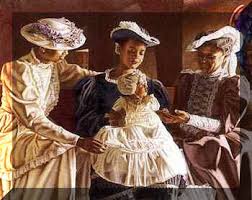Cycling the Underground Railroad--Part 2
DAY 3: SPARTA TO FALMOUTH, KY
 |
| From Dry Ridge |
Last night I stayed in the Ramada Inn next to the Kentucky Speedway. There were no events occurring, so the daytime was pretty peaceful. But nighttime was a totally different story.
Ramada Inns are usually fine. They are clean, but pretty much no frills. I have NEVER slept in a building that had more cracking, creaking, thudding and banging going on as this one! Not caused by the guests, but by the structure itself. At times I could have sworn that someone had actually gotten into my room and was banging stuff around. If I believed that ghosts could "haunt" buildings (dead race car drivers?), I'd say the motel was definitely haunted. But the place is just old, and has been traumatized by all the noise at the speedway.
Skies were totally clear and the air was cool-ish this morning, making the cycling very pleasant. Once again I found myself following the rails, which were considerably more level and straighter than the road.
About 10 miles out, the road turned away from the tracks, and I climbed the one and only "monster hill" up to a ridge. (Explanatory note: To qualify as a "monster hill," the ascent must be sufficiently long AND pretty steep, but the most important qualification is that the rider has to stop at least once to wipe the sweat off his/her sunglasses so they can see where they're going. This, of course, is a technical cycling term.)
This type of riding I've come to term "ridge and hollow." I rode on the ridge for over an hour. It was really obvious I was on top of the hills. That's not to say there are no ups and downs. But they are gentler. The road winds back and forth, following the natural curvature of the terrain. At some points. I stopped for a full 360 degree panoramic view. It seemed like I could see every ridge in the entire state!
Then one drops exhilaratingly into the "v" created by a river or a creek. Instead of being exposed as one frequently is on top of the ridge, you're shaded by lush trees as you follow the snake-like path of the waterway, only after a while to be faced with another challenging incline with a ridge road waiting for you at the top.
I also noticed, almost sterotypically, that the middle and upper middle class live in nice houses and properties on the ridges, while the working and lower classes with trailers, smaller houses, poorly landscaped yards, rickety barns and many old, abandoned quarters live down in the hollows. The contrast could hardly be starker.
 |
| It looked like this property was burned, and now the woods are growing inside yet. Yet the lawn was mowed. Curious. |
But, honestly, as majestic as the ridges are, I absolutely loved the peacefulness of the "holler." Near the end of today's journey I pedaled through such a place. I halted for several minutes and took in the gentle sounds and the cool of the abundant shade.
 |
| One of the forks of the Licking River. |
This is a mixed blessing, as the town has found itself under many feet of water during floods in its history, not to mention being almost wiped out by a category 4/5 tornado.
Nonetheless, people stay. Falmouth hosts the largest festival in the state, the Kentucky Wool Festival, each year in October. (The sheep is the town's mascot.) It also has a nationally acclaimed theatre, which had won many awards for its musical performances. It's famous residents include a movie actor, Nobel prize winner, a future Montana territorial governor and a famous college footbal coach!
There is a connection with the Underground Railroad theme here in Falmouth as well. Charity Southgate was the daughter of a white free woman and a black slave father. The law at that time in Virginia was that free or slave status was determined by the mother's status--so Charity was a Free black.
However, as a child she was "traded" between a number of households, and at one point was going to be taken to New Orleans and sold at the slave auction. As a young adult, she sued for her own freedom. It took 13 years of legal hassling and court decisions, but she was finally awarded her rightful liberty. She moved back to Falmouth, where she had once lived, and became a vital part of Falmouth's segregated neighborhood.
She went on to win her children's freedom, and bought her husband out of slavery. She helped many others, even building homes for them. This evening I went by the lots where Charity's house and also her son Elzey's house once stood. Charity is considered a significant character in this country's African-American hostory.
 |
| Painting of baby Charity Southgate with her white mother and her friends. |
Tonight I'm staying in what used to be a two story bank building in historic downtown Falmouth. Currently, the first floor is the county's Community Development Center. The second floor of what were once offices has been turned into an AirBnB. I'm in Bank Room 1.
 |
| The old bank at 135 Shelby St. |
Today's milage: 47.4






Comments
Post a Comment